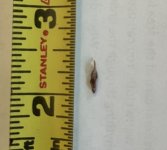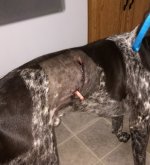Yes, me too. It came up early this year because we're looking at buying property in Idaho that would be used for training/hunting, and it's currently infested with noxious plants that have awns (cheatgrass, medusahead, foxtail). We're in discussions with the county extension service about mitigation strategies, but I'm not convinced that we can adequately knock it back enough to safely run our dogs on the parcel. Some of the plants can be controlled by early spring grazing, while others will have to be sprayed. From what we can tell, it requires a multi-pronged approach. However, regardless of how much effort we'd put into the parcel, seeds could still come in from the adjacent parcels. I always knew that cheatgrass, foxtail, etc, was a problem, but until the past few days, I did not fully understand the scope of the issue.
If you're interested in this ecological calamity (yes, that's what I think it is), you can read more here:
https://westernwatersheds.org/wp-content/uploads/2024/02/Cheatgrass-Literature-Review-final.pdf
A few stats:
1. For reference, a study in southern Idaho showed a cheatgrass density ranging from 100 to 1,400 cheatgrass plants per square foot (1,076 to 15,069 plants per square meter), with an average density of 6,157 plants per square meter (Stewart and Hull 1949).
2. Cheatgrass covers at least 51 million acres in the West (about 39% of the Great Basin), with some estimates putting cheatgrass-infested lands at 99-101 million acres . This means an area larger than the entire state of Nebraska is dominated by this invasive species.
3. Cheatgrass seed densities can reach 8,000 to 31,000 seeds per square meter, with one study finding an average of 17,717 seeds per square meter . A single plant can produce up to 5,000 seeds, creating an overwhelming competitive advantage over native species.
ETA: I HATE grass awns, and I HATE what they can do to our dogs. Tailgate checks are imperative IMO but you should also be on the lookout for other signs/symptoms of migrating foreign bodies in your dogs, e.g., change in attitude, coughing, head shaking, sores on paws, chest, and back, etc.


